Marine life in the Andaman – Frog fish
Family name: Antennariidae
Order name: Lophiiformes
Common name: Frogfish or Anglerfish
Scientific name: Antennariidae
Frogfish are very misunderstood and very little is known about this unique underwater lie-in-wait predator. They live generally on the ocean floor around coral or rock reefs throughout tropical and subtropical waters. Most species live in shallow water although some species are deep dwelling. Recreational divers in Asia are most likely to spot certain species including giant, clown and painted frogfish.
Around the Andaman we have seen frogfish in the Similans, Richelieu Rock, Koh Tachai, Koh Doc Mai, Phi Phi, Racha Yai and Noi.
Frogfish, are named because of their squat resemblance to the common amphibians, they range in size from around 5cm to the giant frogfish’s 40cm. The resemblance to frogs is that their fins are more like legs, which they use to walk slowly over the sea bed and on top of sponges and corals to lie in wait for their prey.
Colour is often not much help in identifying different frogfish since they can change this to allow themselves to camouflage and blend in with the environment they are in. Depending on the species, this change might take seconds or weeks. Some frog fish’s skin is also covered by bumps, flaps, hairs and tassles which further allow for mimicking the nearby seabed, corals, sponges or weeds. This also explains how divers can often cruise straight past, not noticing their presence.
There are not many other fish that you could mistake for a frogfish but it can be exceptionally difficult to distinguish between the sexes or species. Unless you get out your scalpel, there is no way to tell male from female. Since colouration is not a method of identification for all but the most rare species, you should be looking out for species-specific features such as what form the lure takes (maybe it is mimicking a worm or fish), the number of eye spots and the number of spines.
Frogfish move very slowly but they have the fastest strike speed of any other animal on earth. They move by gulping water with their massive mouth, then forcing the water through the gills, this allows them to move about the reef or bottom.
As the frogfish is scaleless and unprotected camouflage is an important defense against predators. Some can also inflate themselves, like pufferfish, by sucking in water in a threat display. In aquariums and in nature, frogfish have been know to when moved from their hiding spots and are clearly visible, to be attacked by clownfish, damselfish, and wrasse, and even to be killed.
It is the feeding approach of anglerfish that makes it such interesting creatures. They are perfectly camouflaged and lie in wait for any prey. The lure may be used to attract prey in a variety of different ways, depending on the species.
They can also use a chemical attractant so sometimes they just lie in wait for some unfortunate creature to venture too close. When the prey is within grasp the attack takes place. The frogfish expands its oral cavity engulfing the prey with a reflex that instantly sucks it in by creating suction pressure inside the mouth. Taking no more than around 6 milliseconds.
Frogfish have also been seen stalking their prey by sneaking towards their target along the sea bed.
They eat mostly small fish, shrimps and crabs but their prey sometimes being up to twice their own body size. As they are toothless the frogfish swallows its prey whole, allowing digestive enzymes to do the rest. The prey can often be seen twitching and writhing against the walls of the its stomach until they no longer are alive. Frogfish have also been observed to eat lionfish; the poison appears to have no effect on them. In addition to expanding their mouths, frogfish can also expand their stomachs to swallow animals up to twice their size.
What eats anglerfish? the main answer is another frogfish, they are known for being cannibalistic. However considering that they are designed more to catch fish swimming in the water column, this is a rather rare phenomenon. Moray eels have also been witnessed eating frogfish, but again, this is an uncommon sight.
Learn more interesting facts about the local marine life to Phuket by joining us on a Naturalist or Fish ID specialty course.
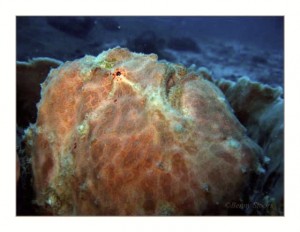
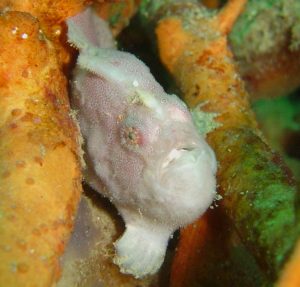
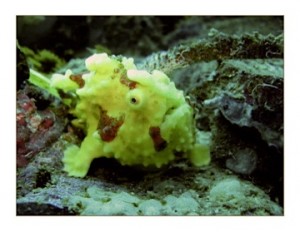
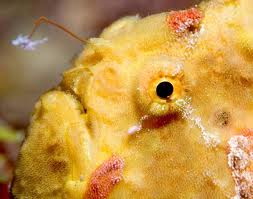
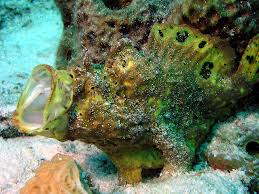





Scubacat Community